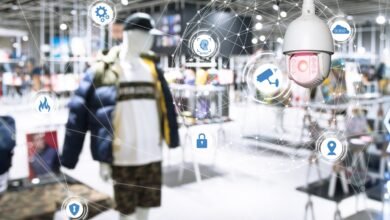How to Implement IoT Access Control to Improve Cybersecurity.

Implementing IoT access control is vital for enhancing cybersecurity in today’s interconnected world. The Internet of Things (IoT) has transformed industries, connecting devices and systems to streamline operations and improve efficiency. However, this interconnectedness also introduces security risks, making robust access control measures essential to protect sensitive data and prevent unauthorized access. In this article, we’ll delve into the significance of implementing IoT access control and provide insights into effective strategies to bolster cybersecurity within IoT ecosystems.
Effective IoT access control is critical for mitigating potential security threats and safeguarding IoT deployments against malicious activities. By implementing stringent access control measures, organizations can control who can access IoT devices, networks, and data, thereby reducing the risk of unauthorized intrusion and data breaches. Throughout this article, we’ll explore various aspects of IoT access control and discuss best practices to improve cybersecurity in an increasingly interconnected world.
How to Implement IoT Access Control to Improve Cybersecurity
Defining IoT Access Control
IoT access control refers to the mechanisms and protocols put in place to manage and regulate access to IoT devices, networks, and data. It encompasses authentication, authorization, and encryption techniques to ensure only authorized entities can interact with IoT systems.
Importance of IoT Access Control in Cybersecurity
Effective IoT access control is paramount in safeguarding against unauthorized access, data breaches, and malicious attacks. By implementing stringent access control measures, organizations can mitigate the risks associated with IoT deployments, protecting sensitive information and maintaining operational integrity.
Challenges in IoT Access Control
Despite its significance, implementing robust IoT access control poses several challenges, primarily due to the inherent characteristics of IoT ecosystems.
Complexity of IoT Networks
IoT networks often comprise a diverse array of devices, sensors, and gateways, creating a complex and dynamic environment. Managing access control across such heterogeneous systems can be challenging, requiring comprehensive solutions capable of addressing diverse requirements.
Vulnerabilities in IoT Devices
Many IoT devices lack adequate security features, making them susceptible to exploitation by malicious actors. Weak passwords, unencrypted communication channels, and outdated firmware are among the common vulnerabilities that adversaries may exploit to gain unauthorized access.
Lack of Standardization
The absence of standardized protocols and frameworks for IoT security exacerbates the challenges associated with access control. Varying implementation practices and compatibility issues hinder interoperability and complicate efforts to enforce uniform security measures across IoT deployments.
Key Components of IoT Access Control
To establish effective IoT access control, organizations must implement a combination of key components tailored to their specific requirements.
Authentication Mechanisms
Authentication mechanisms, such as passwords, biometrics, and multi-factor authentication (MFA), verify the identity of users and devices before granting access to IoT resources.
Authorization Protocols
Authorization protocols define the permissions and privileges granted to authenticated entities, ensuring they can only access resources relevant to their roles and responsibilities.
Encryption Techniques
Encryption techniques, including asymmetric and symmetric encryption, protect data transmitted between IoT devices and backend systems, safeguarding it from interception and tampering.
Device Management Systems
Device management systems enable centralized administration of IoT devices, facilitating tasks such as provisioning, monitoring, and remote firmware updates to ensure they adhere to security policies.
Best Practices for Implementing IoT Access Control
Implementing robust IoT access control requires adherence to best practices and industry standards to mitigate security risks effectively.
Conducting Risk Assessment
Prioritize risk assessment to identify potential threats and vulnerabilities within IoT deployments, enabling proactive mitigation measures to be implemented.
Implementing Role-Based Access Control (RBAC)
Adopt role-based access control (RBAC) policies to assign permissions based on users’ roles and responsibilities, minimizing the risk of unauthorized access to sensitive resources.
Continuous Monitoring and Updates
Implement continuous monitoring mechanisms to detect anomalous activities and security incidents in real-time, coupled with regular updates to address newly identified vulnerabilities and emerging threats.
Securing Communication Channels
Employ secure communication protocols, such as Transport Layer Security (TLS) and Datagram Transport Layer Security (DTLS), to encrypt data transmissions and prevent eavesdropping and man-in-the-middle attacks.
IoT Access Control Solutions
A myriad of solutions are available to address the diverse security requirements of IoT deployments, ranging from hardware-based to cloud-based approaches.
Hardware-Based Solutions
Hardware-based solutions, including secure elements and trusted platform modules (TPMs), provide hardware-level security features embedded within IoT devices to protect against tampering and unauthorized access.
Software-Based Solutions
Software-based solutions encompass security protocols and frameworks integrated into IoT platforms and applications, offering flexible and scalable approaches to access control and data protection.
Cloud-Based Solutions
Cloud-based solutions leverage cloud computing infrastructure to centralize access control management and provide scalable and resilient security services for IoT deployments.
Case Studies
Numerous industries have embraced IoT access control to enhance cybersecurity and safeguard critical assets and data.
Healthcare Industry
In the healthcare sector, IoT access control enables secure access to patient health records, medical devices, and telemedicine platforms, ensuring confidentiality and compliance with regulatory requirements such as HIPAA.
Manufacturing Sector
Manufacturing facilities leverage IoT access control to secure industrial control systems (ICS), machinery, and production lines, mitigating the risk of cyber-physical attacks and operational disruptions.
Smart Home Environments
In smart home environments, IoT access control safeguards connected devices such as smart thermostats, security cameras, and home automation systems, protecting privacy and preventing unauthorized access to residential premises.
Future Trends in IoT Access Control
As IoT ecosystems continue to evolve, several trends are shaping the future of access control to meet emerging security challenges.
Integration with AI and Machine Learning
Integration with artificial intelligence (AI) and machine learning (ML) enables proactive threat detection and adaptive access control mechanisms, enhancing the resilience of IoT systems against evolving cyber threats.
Blockchain for Enhanced Security
Blockchain technology holds immense promise for enhancing security in various domains, including the Internet of Things (IoT). Blockchain is a decentralized ledger system that records transactions across a network of computers, making it immutable and transparent. In the context of IoT, blockchain can significantly improve security by providing tamper-resistant data storage, robust identity management, and secure communication channels.
One of the key benefits of blockchain in IoT security is its ability to ensure data integrity. Each transaction or data exchange recorded on the blockchain is cryptographically linked to previous transactions, creating a chain of blocks that are virtually impossible to alter retroactively. This feature makes blockchain ideal for maintaining the integrity of sensor data, ensuring that it remains accurate and trustworthy throughout its lifecycle.
Edge Computing for Real-Time Response
Edge computing has emerged as a revolutionary paradigm for enabling real-time response in a variety of applications, including the Internet of Things (IoT). Unlike traditional cloud computing, which relies on centralized data processing centers, edge computing brings computation and data storage closer to the source of data generation. This proximity to the edge of the network reduces latency and enables faster response times, making it ideal for applications that require real-time decision-making and rapid data analysis.
Read More: Planning for Connectivity in IoT Hardware Design: 5 Steps for Success
Conclusion
FAQs
What is IoT access control?
IoT access control refers to the mechanisms and protocols implemented to regulate and manage access to IoT devices, networks, and data, ensuring only authorized entities can interact with IoT systems.
Why is IoT access control important?
Effective IoT access control is crucial in safeguarding against unauthorized access, data breaches, and malicious attacks, thereby protecting sensitive information and maintaining operational integrity.
What are the key components of IoT access control?
Key components of IoT access control include authentication mechanisms, authorization protocols, encryption techniques, and device management systems, which collectively ensure secure access and data protection in IoT deployments.
How can organizations implement IoT access control?
Organizations can implement IoT access control by conducting risk assessments, implementing role-based access control (RBAC), continuously monitoring and updating security measures, and securing communication channels between IoT devices and backend systems.
What are the future trends in IoT access control?
Future trends in IoT access control include integration with AI and machine learning for proactive threat detection, leveraging blockchain for enhanced security and data integrity, and embracing edge computing for real-time response to security events and anomalies.











